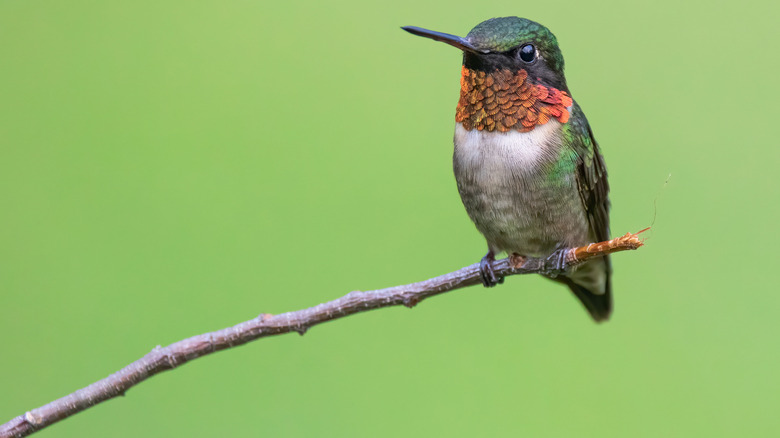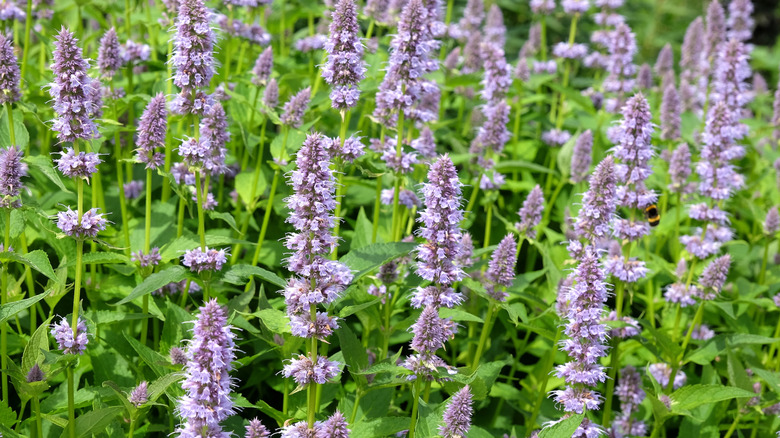No Hummingbird Garden Is Complete Without One Striking Lavender Look-Alike
If you're looking to attract hummingbirds, bees, and butterflies to your garden, there's one flowering plant that stands out as a must-have: anise hyssop, also called hummingbird mint. Known for its tall, lavender-like spikes and sweet, licorice scent, it's an herbaceous perennial that not only brings a splash of color but also attracts pollinators. While it may look like lavender at a glance, anise hyssop (Agastache foeniculum) has its own unique charm that makes it a favorite among gardeners. Here's why anise hyssop deserves a prominent spot in your hummingbird haven.
Anise hyssop is a favorite among hummingbirds for a few key reasons. First, they love the color. Hummingbirds can see certain colors as indicators of a strong energy source, such as reds, yellows, and purples. (In fact, some hummingbird lovers tie an orange ribbon around their trees.) So anise hyssop's vibrant purple flowers are impossible for them to miss! Plus, these blooms are shaped like tiny tubes, making it easy for hummingbirds to drink from the flowers' nectar using their long beaks and tongues — almost like sipping through a straw.
Other pollinators, like bees and butterflies, are just as drawn to anise hyssop. It produces an abundance of nectar throughout the summer months, while its aromatic leaves are perfect for herbal teas or potpourri. Even more reasons to plant some in your garden!
How to grow anise hyssop
Ready to add some anise hyssop to your garden? Spring is the perfect time to plant, once the last frost is behind you. Start by purchasing seeds online or from a garden center. Pick a spot that receives at least six hours of sunlight each day, and because it's a perennial, plant it somewhere it won't need to be moved for several years.
To ensure successful growth, begin by germinating seeds in containers before transplanting them into the garden. Sow seeds about just barely under the soil in small containers filled with seed-starting soil mix, keeping the soil consistently moist for anywhere between 10 and 20 days. At this point you'll start to see seedlings that are ready to be transplanted into your garden. Soon, they'll turn into full plants — no extra fertilizer is needed!
Anise hyssop's easy growth is one of its best features. This resilient plant can handle both full sun and partial shade. It favors well-drained soils, but isn't overly particular about soil type or moisture levels. Once established, it's even drought-tolerant. It can grow to be about 4 feet tall and spreads easily through horizontal roots. It blooms from July until fall, adding lasting color and attracting hummingbirds throughout the season.

